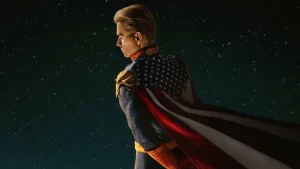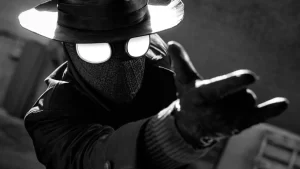When the Art House Stretches Beyond Its Reach
A Film Review of The Tree of Life
By: Lawrence Napoli
 So my sister makes a film recommendation to me one day and claims (paraphrasing here) that it is “one of the best movies she has ever seen.” Now, if anyone else makes such a statement to me, I usually brush that off as ignorant bravado, but I love my sister very much and I respect her opinions. Although she, like I, dabbled in the arts as younger people (music, theater, and musical theater) she was the scientist/mathematician of the family while I fulfilled the role of the historian/philosopher. As much as we are the same, so too, are we quite different. I love a good Indy film now and then and figured the 2011 Cannes Film Festival Palm d’Or winner was more than worthy of my time. I’ve made mistakes before and I am certain I will make more before my time on this planet has expired and unfortunately (sorry sis) seeing this film was one of them.
So my sister makes a film recommendation to me one day and claims (paraphrasing here) that it is “one of the best movies she has ever seen.” Now, if anyone else makes such a statement to me, I usually brush that off as ignorant bravado, but I love my sister very much and I respect her opinions. Although she, like I, dabbled in the arts as younger people (music, theater, and musical theater) she was the scientist/mathematician of the family while I fulfilled the role of the historian/philosopher. As much as we are the same, so too, are we quite different. I love a good Indy film now and then and figured the 2011 Cannes Film Festival Palm d’Or winner was more than worthy of my time. I’ve made mistakes before and I am certain I will make more before my time on this planet has expired and unfortunately (sorry sis) seeing this film was one of them.
The Tree of Life is the brain child of writer/director Terrence Malick whose lauded work includes Badlands (1973), Days of Heaven (1978) and The New World (2005). Most should be more familiar with his best film, The Thin Red Line (1998) which was adapted from the autobiography of James Jones depicting his experiences in the Pacific Theater of World War II. There were 2 WWII films released in 1998. Do you remember the other one? Sure, Saving Private Ryan got all the attention that year because 1) Spielberg directed it 2) Tom Hanks was the lead and 3) It featured gut-wrenchingly graphic imagery of violence, mutilation and gore as only the hell of war can deliver on a silver platter. I don’t need to see gore to comprehend that war is perhaps the most horrible state of being on Earth, thus I gravitated to The Thin Red Line because it all but exclusively explored the mental anguish of warfare and its effects on the individual. It featured dreamlike cinematography to allow the audience to engage in the same inner struggle that comes natural to coping with the unnatural state of war: an evolutionary invention by human beings.
That same element of emotional internalization is of the utmost significance in The Tree of Life. Once the “story” of this film begins, it is told from the fragmented perspective of a young boy named Jack with whom the audience shares many instances of pain and pleasure through his own personal growth, or rather, evolution. Although the theme of evolution is prevalent throughout, it is the manner in which growth occurs that concerns the human activity in this film. Are people to evolve by nature (i.e. humans as animals) or by grace (i.e. ethical, moral or super-natural)? This presents one of the most cryptic dichotomies of the human condition and any exploration into this subject matter allows society to peel away another layer of camouflage that obscures “the mystery of life.” Ironically, the narrative that involves Jack and his family is the most interesting aspect of this film and it is denied a natural evolution of its own by the director. Malick imposes his own high minded agenda to repress the audience’s opportunity to connect with this one element of the film by over saturating the visual palate with random cut-aways to and from Jack’s past, present, future, the perspective of his parents, the perspective of his siblings and the perspective of the universe at large. Perhaps Malick’s intent was to display the truth that life, overall, marches on regardless of the tunnel vision that an individual engages in his or her own life?
The Tree of Life is an experimental videographer’s wet dream where pace, plot and character are completely disregarded. The reason? To present an esoteric depiction of life through the eyes of a child with a Planet Earth style, docu-dramatic interlude featuring an arbitrary selection of evolutionary imagery to introduce the audience to the trials and tribulations of (relatively) poor, white Americans of the 1950s. The nature of experimental film and film installations is to purposely deconstruct cinema’s innate narrative structure in an attempt to explore the abstract from a theoretically “purist” perspective. It can be an unsettling experience to the untrained eye which is why the vast majority of experimental films rarely exceed 20 minutes in length. The problem with The Tree of Life is that it represents 139 minutes of uninterrupted, experimental film which leaves the average or unprepared viewer frustrated at the complete lack of relevance that is being flashed across the screen. Those who suffer from smaller attention spans may find a greater appreciation for this film because it is constantly jumping to and from spontaneous vignettes of “evolving life.” Just like evolution, this film proceeds quite slowly which allows the viewer plenty of down time to digest the imagery as it is being seen. The viewer naturally attempts to reconcile the whole by correlating its parts and it is at this point where the audience can be soured on the experience.
Malick attempts to paint a beautiful, yet all encompassing, moving picture in regards to the concept of life from an undefined moment when/where it did not exist to a specific point in time and a specific life form when/where it flourishes. That is an incredible amount of evolution to capture in about 2 hours of real time and Malick’s imagery is far too feeble to establish such a grandiose sentiment. On film, the abstract cannot be enriched by randomizing a series of defined imagery because the viewers’ preconceptions pollute the artist’s application without the direct and active use of metaphor. Anything less comes off as pompous and bourgeoisie because it appears as though the director either did not know or did not care about the relevance of his or her own juxtaposition. There must be a need for selecting the imagery that is shown in film. It cannot be arbitrary. If such abstract and artistically pure intentions surrounded The Tree of Life, why have any element of drama to it at all? Especially drama that is spear-headed by the likes of Brad Pitt and Sean Penn? The answer is far more practical than its seemingly lofty ambitions: someone needs a reason to see this film in the first place.
And that, my friends, was the real hook to my interest in this film. I wanted to see Pitt and Penn in a gritty drama and what I saw barely qualified as cinema. That’s not to say that their performances were in vain, merely abbreviated. Sean Penn has a particular knack for evoking the prototypical “broken man” and does so quite well in ToL, but his total screen time runs somewhere between 5-10 minutes in length which puts him out of contention for every manner of acting recognition not entitled “best acting in a Sesame Street short work.” Brad Pitt and Jessica Chastain share most of the acting burden as they play Jack’s father and mother respectively. Pitt produces a masterful performance depicting a stern father representing natural evolution as harsh and unforgiving. Chastain counters with an equally emotive and caring mother representing graceful evolution as self-satisfying and honorable. When the audience thinks deeper elements to the father and mother will be revealed, random cut-aways can be relied upon to obliterate any building chemistry. I felt the performance of Hunter McCracken as Jack was solid, but nothing you haven’t seen before from child actors whose primary interest on set did not involve messing around and acting their actual age.
In the end, The Tree of Life is a very self indulgent film that discharges an array of beautiful, sequential imagery on the viewer’s lap in hopes of evoking some kind of response. In many respects, this “film” is no such creature because it washes its hands of virtually every convention to traditional filmmaking which will be a frustrating experience to most. This level of abstract experience is better had at one’s local art gallery featuring portraits and sculpture because the medium of cinema is a form of precise and instantaneous control as commanded by the director. This great power cannot be wielded with flippant responsibility. Art house films have developed this reputation of somehow containing more “meaning” to it if presented in a cryptic manner. If more people do not understand it, the film is inexplicably elevated to a higher status as an art form. I say “nay” to the high art pundits! Dissonance of “the abstract” may evoke strong emotional and intellectual responses in static art forms, but such an effect will never be as powerful as achieving synergy between the screen and the audience that only the greatest examples of narrative filmmaking have delivered around the world.







